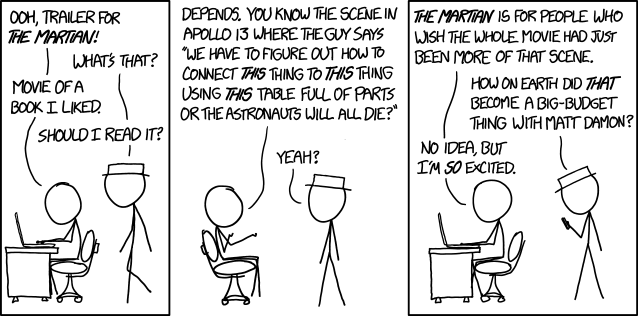As a big fan of the Back to the Future trilogy, I can hardly let October 2015 go by entirely without comment. I've been a fan of the movies ever since I got the first one on VHS from a McDonald's promotion in 1994, so I've been looking forward to this futuristic year for two decades. But I'm not going to write another list about what Part II got right or wrong about our present; there have been plenty of those already. Instead I read a book by a fan that was released earlier this year, the most comprehensive account of the famous film series written to date.
We Don't Need Roads is a relatively straightforward, chronological delineation of the inception, production and impact of the Future trilogy. Thanks to DVD commentaries, special features, and the Internet, there are not that many bits of information that have never been heard before, but the author's research and interviews add credence to these anecdotes. He remains unbiased about the events, allowing those involved to speak for themselves with numerous direct quotes.
The concept for Back to the Future was not immediately accepted by Universal Pictures. In the early 1980s there had been a few unsuccessful time travel films, and usually when a comedy starred a teenage protagonist it was raunchy like Porky's, not family-friendly like Future. Then executive producers Steven Spielberg, Frank Marshall, and Kathleen Kennedy came on board and convinced the studio it was worth funding. One amusing piece of trivia is that studio head Sid Sheinberg wanted to change the title because he thought it didn't make sense, but he denies the common allegation that his proposed title was "Spaceman from Pluto."
There are a few events that get special attention in Gaines' book. One is the replacement of Crispin Glover when he wanted a higher salary to appear in the sequels. Jeffrey Weissman was chosen to become the new George McFly because he was able to impersonate Glover's voice and mannerisms, but he never felt like he was a respected member of the cast. Lea Thompson in particular felt a loyalty to Glover so she seemed to resent that another actor was playing her on-screen husband. Then there was the matter of Glover suing the filmmakers for using his likeness without permission, and Weissman inadvertently provided fuel for that lawsuit when he spoke to Glover about his experiences on set.
Another noteworthy incident was the accident that caused a stuntwoman to be injured. It was during the scene of Part II in which Griff Tannen and his gang are tricked into flying head over heels into the plate glass of the 2015 clocktower. The stunt performers were supposed to be released from cables and fall on to an airbag behind the window, but Cherly Wheeler-Dixon's cable sent her into a pillar and on to concrete, breaking bones in her face and wrist. Without the resources to reshoot the sequence, the moment of impact appears in the finished film.
I could go on and on about the behind-the-scenes factoids this book discusses; let it suffice to say that if you are a fan of the Back to the Future trilogy or the process of filmmaking in general, it is well worth reading.
To find out more about the author or purchase his books, including ones about Pee-Wee's Playhouse and A Christmas Story, go to www.caseengaines.com/.
I could go on and on about the behind-the-scenes factoids this book discusses; let it suffice to say that if you are a fan of the Back to the Future trilogy or the process of filmmaking in general, it is well worth reading.
To find out more about the author or purchase his books, including ones about Pee-Wee's Playhouse and A Christmas Story, go to www.caseengaines.com/.





